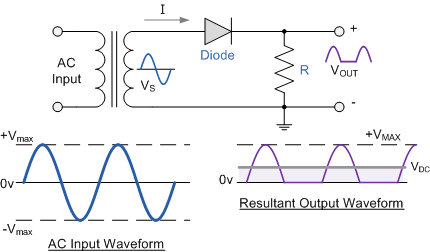Here's as simple as possible explanation...
Let's say you have a transformer that converts mains AC voltage to lower AC voltage :

The output of the transformer is still AC but the peaks are lower, on both positive and negative sides.
When you convert AC voltage to DC voltage, you have to make everything below the 0 line disappear, and this happens when you use diodes to rectify the signal.
If you use a single diode, that's called half wave rectification and the output will look like this:

You can see that at the output, you only have voltage when the AC voltage of the transformer was going above the 0 line. The problem is that for half the time, you have 0 voltage on the output because when the AC wave on the transformer is below 0, the diode blocks it.
With full wave rectification, you manage to flip that negative AC voltage segment and have it on the DC output :

But notice that because the AC output is a sine wave, the voltage will climb up all the way to a peak then slowly go down to 0 and than the process repeats itself. With full wave rectification you have a number of "pulses" that's twice the value of your mains frequency (50Hz in Greece afaik)
This output is still considered DC voltage, but it's not like the voltage you're used to, for example by measuring batteries.
For this DC output to be actually usable, you have to add a capacitor there to charge up with energy when a pulse comes and goes all the way to the top, and as the pulse starts to go down towards 0, the capacitor's job is to fill up that space, to resist and keep the voltage up to that peak value for as long as possible.
The more capacity, the more time the capacitor can provide that difference of energy that's no longer provided by the rectified AC wave.
You call it smoothing capacitor because it smooths out the DC ouput, by providing energy for the moments when the rectified AC wave is low.
You can't get the DC wave perfectly smooth, but you can get close enough:

Now again, a capacitor stores energy. If you demand little amount of current, the capacitor discharges slower. If you demand a lot of current, the capacitor discharges faster, because you take out a lot of energy from it.
That's why you have in that formula the current (I) and dv/dt and that's why the more current you pull, the bigger the dv/dt is, meaning the more current you need, the faster the voltage goes down within a period of time and the dc output will have more pronounced /\/\/\/\/\/\/\ output.
Watch this: